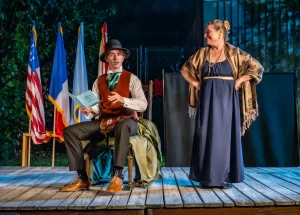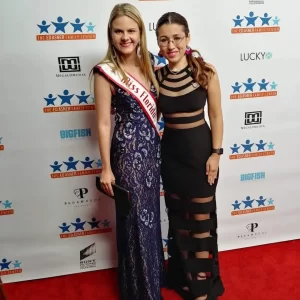By Deborah Desilets | [email protected]
We Floridians celebrate Arbor Day in January. This year, it is scheduled for Jan 18th. Florida is ahead of other parts of the country due to our growing season. Hopefully, this Arbor Day there will be many people in many parks who will lend a hand, pick up shovel to move and open the earth and plant a tree. A tree that very likely will out live the planter! We all know the joy of the shade of a tree—we all love trees in a city, park or forest. They are joyful! So, at 10 years old, when Sister Mary Ellen put a shovel in my hand and instructed me to “start digging”, I did. With that act I became responsible for “planting” that joy. I wonder where this tradition began. What were the roots of this community activity? For America, this tradition migrated from Spain.
As the story goes one Spanish priest observing all the devastation of the war with the French put aside time from his lamenting and began organizing and making a difference: he would plant a tree. And not just he, but all the people of the village, and he would make a celebration of the trees. To quote the chronicles: “While Napoleon was ravaging Europe with his ambition in this village in the Sierra de Gata lived a priest, don Juan Abern Samtrés, who was “convinced of the importance of trees for health, hygiene, decoration, nature, environment and customs, decides to plant trees” He also drafted a manifesto in defense of the trees that was sent to surrounding towns to spread the love and respect for nature, and advocating trees be planted in their localities.” No wonder the nuns held Arbor Day special!
In America, the first American Arbor Day was originated in Nebraska City, Nebraska by J. Sterling Morton and held on April 10, 1872. By 1883 Birdsey Northrop became the Chairman of the committee to campaign for Arbor Day nationwide sending his message and love of tree planting to Australia, Canada, and Europe. In 1893, Florida’s First Lady, May Austin Elizabeth Mann Jennings, became alarmed at what she saw as the “consequences of the conquest of the Florida wilderness” and through her tireless effort in ecological conservation and creation of the Florida Board of Forestry she earned the title “Mother of Florida’s Forestry”. In Florida, the Forestry Division can provide Tree information on Types, Planting and Species. As well as Forestry Grants that available for 501c3 not-for-profits; those are issued in September of each year. Lady Byrd Johnson said it best; we all just have to “Plant a tree, a bush or a shrub.”
Wondering what to plant? I found a 2007 UF IFAS article that identified several high-wind-resistant trees that included live oak, American holly, southern magnolia, bald cypress, and cabbage palm. These are all large trees and not suitable for every yard. Smaller wind-resistant trees include yaupon holly, fringe tree, and crape myrtle among many others. This boils down to “right place, right species, and right maintenance.” With a tree grading cue card shows what a Florida Number 1 tree looks like. A forester friend tells me: “Only plant the best! Place the root ball a little above the grade, and make “a moat” around the tree to hold water that encircles the edge of the roots for water to be retained. Then, water, water, water until the roots take. And give the tree proper maintenance!”
Florida’s wonderful urban parks are framed by live oaks, southern magnolias, figs, peaches, pears, and oranges. Our trees are a cultural signifier of where we are and create scale and a sense of place—even in small areas—if you choose well. Tree planting design is site specific and where we can mimic nature in design—with a wide Right of Way (ROW), proper permissions in place and the needs of utilities understood—trees can be planted to mimic nature. One of the resources available is the Vibrant Cities Lab at: http://www.vibrantcitieslab.com/toolkit/ this website offers planning tools to help with your urban project. For those communities along the Old Spanish Trail OST (Hwy 90)—who might wish to commemorate that great road—plant trees of red, yellow and white coloring. For those, look to sourwood, black gum, red oaks, sweet gum, ginkgo or anything in the rose family, like pear or cherry. For the love of trees, history and good health become proactive about trees and advocate for theirimportance in our environment and making our sense of place in Florida.
So, go out January 18, 2019 and “plant a tree, a bush or a shrub”! You’ll feel great about it and the joy you add to your City—let’s learn from Michael: plant trees and select coastal plain species for wind resistance!
For more information, go to: IFAS Hurricane Resistant Tree List; http://blogs.ifas.ufl.edu/volusiaco/2018/02/21/hurricane-resistant-trees/
http://edis.ifas.ufl.edu/pdffiles/FR/FR17400.pdf



